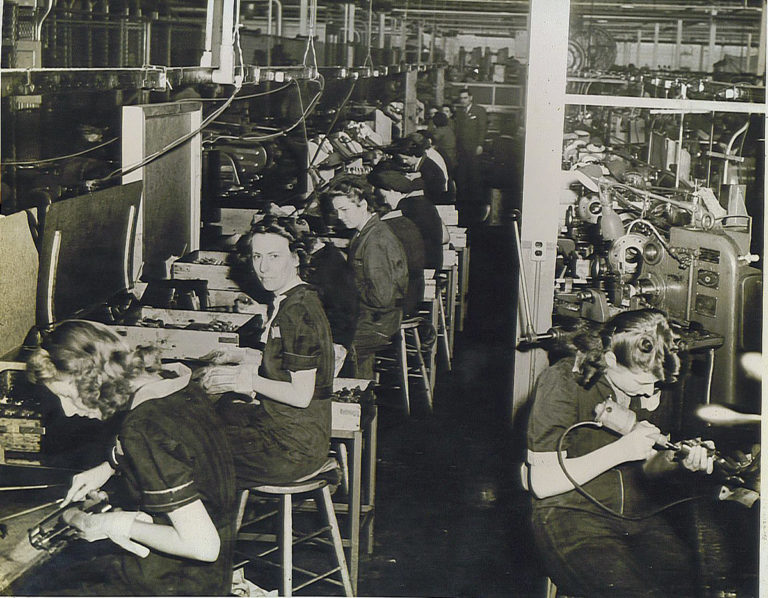
Twenty kilometres from downtown Toronto sandwiched between a public park and a row of commercial businesses – a small building is visible from the road. Thousands of drivers pass by the location every day: some may glance at the building or water tower located on an adjacent abandoned lot. But most are unaware of the building's historical, social, and economic significance – directly connected to Canada's history of small arms development.
Because at this location, during World War Two, workers manufactured over 900,000 thousand Lee Enfield .303 rifles and 100,000 Sten submachine guns. Sadly, only the two-story red brick Small Arms Inspection Building building and a water tower – remain. But between 1941 and 1945, the men and women who worked in the 212,000 square foot plant helped change the war's outcome.
And although the vast plant is now gone, the history of making small arms for the Canadian Armed Forces that began at this location continues. There is a connection between this 15.7-hectare parcel of land on the shores of Lake Ontario and present-day Colt Canada. So, how did a manufacturing facility in Mississauga, Ontario, become an essential part of Canadian small arms development?
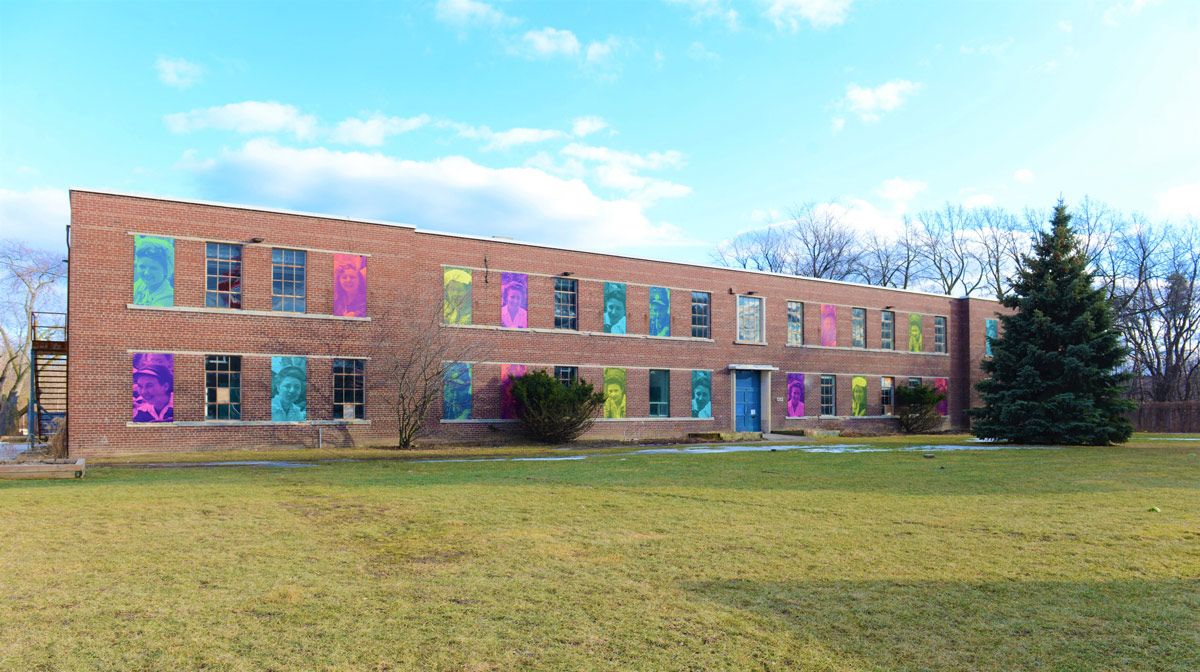
The story began when Canada declared war on September 10, 1939. Canada, like every western democratic country, required firearms. The most pressing need was to arm thousands of volunteers who joined the Canadian military. The UK was in a similar situation after the collapse of France and the loss of weapons during the Dunkirk evacuation. in 1940. Unfortunately, Canada did not have a firearms manufacturing capability to meet this need.
Interestingly, the Quartermaster General of Canada identified the need for a military firearms manufacturing capability in 1927. However, typical of short-term political thinking, the government decided the demand did not justify the cost, and the idea was scrapped. By 1937 the Department of National Defence (DND) reexamined the need for a firearms manufacturing facility.
DND started a feasibility study to build a factory based on British firearms manufacturing practices. "Studies," someone once said, "are where good ideas go to die." But, On May 31, 1940, as the war raged in Europe, this study became a proposal to build a domestic small arms manufacturing plant.
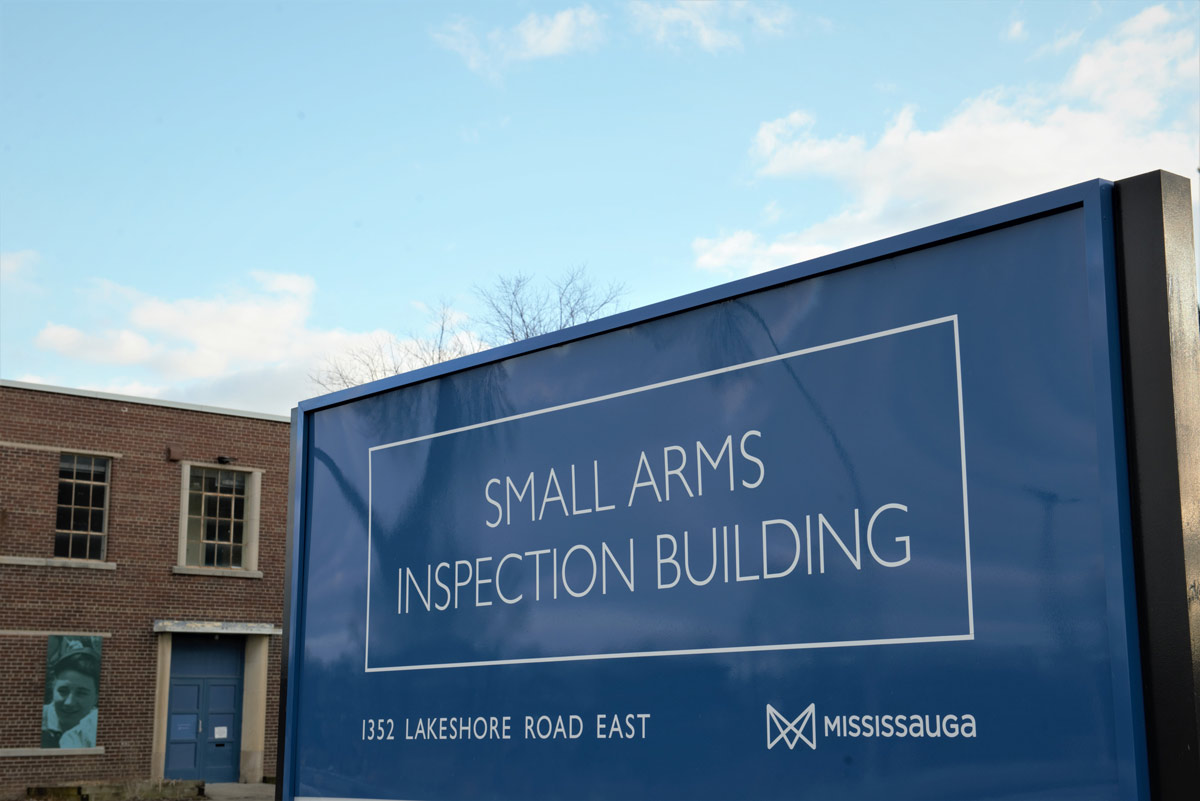
By June 1940, DND received authorization to start construction. The plant's location was logical and well-suited for a major firearms manufacturing operation. In 1935, DND purchased a parcel of land next to the Long Branch rifle ranges located west of Toronto. The location was close to labour resources, and a streetcar line stopped at the nearby Long Branch terminal. The 300 and 600-yard rifle ranges provided a convenient way to test-fire weapons.
DND was initially responsible for the design and construction of the new Dominion Small Arms Factory. However, this corporate structure proved to be unworkable. There were construction decision delays. Permission to buy manufacturing equipment was slow and affected progress. As a result, the Department of Munitions and Supply took over the project on August 7, 1940.
Small Arms Limited (SAL), a non-profit Crown Corporation, was created. With this change, the company could operate as a private company, with a board of directors and a president. The new corporate structure worked: construction started on August 20, 1940. Remarkably, the plant was ready for occupancy ten months after construction began. There were only two employees in July 1940. By October, the labour force had expanded to 58.
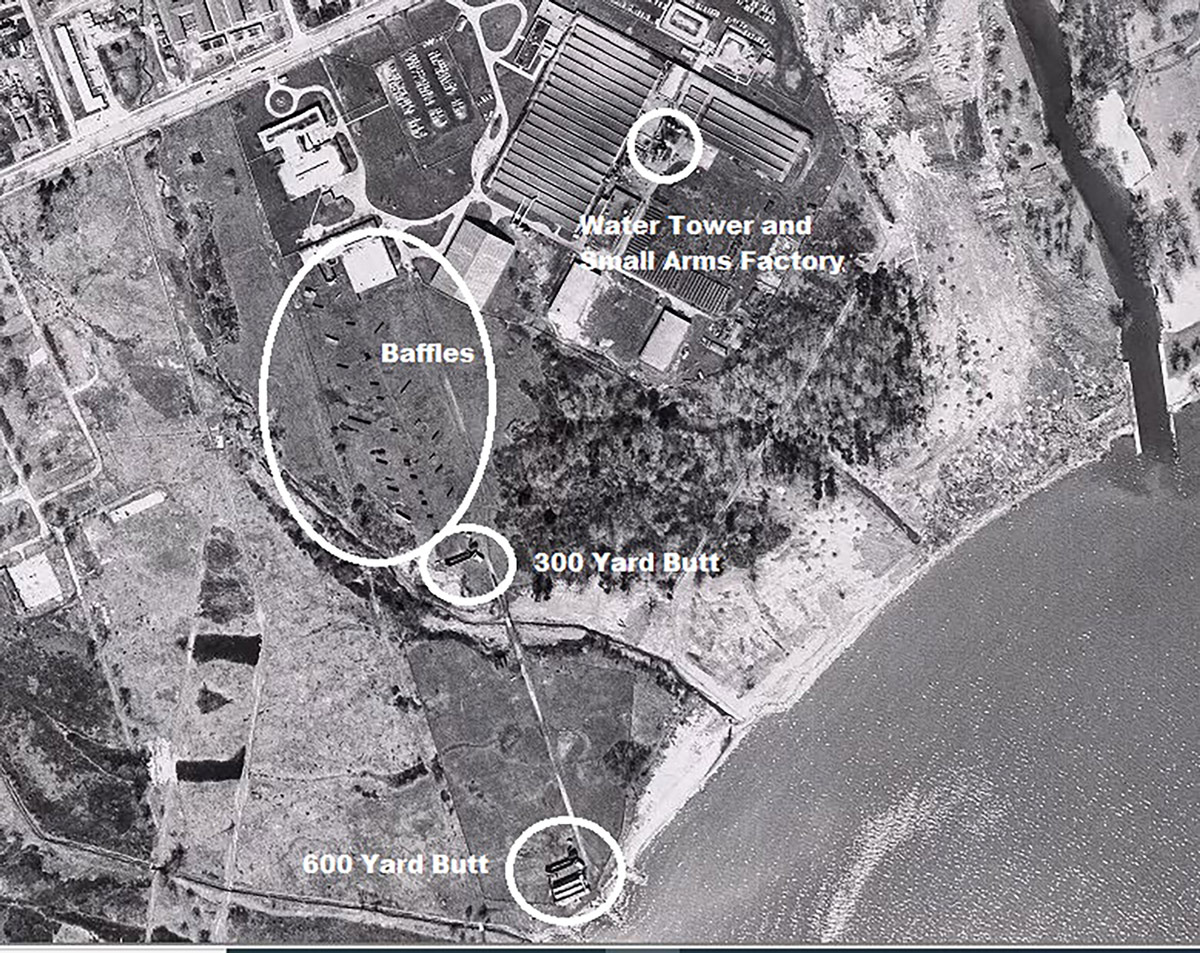
While the plant was under construction, engineers created blueprints to manufacture specialized tooling. But the challenges were considerable. Manufacturing equipment was required to outfit the plant. The Canadian Government placed orders with US suppliers through the British Purchasing Commission in New York. Other equipment was obtained from the Ross Rifle factory in Quebec.
With construction completed in June 1941, the next step was to install the equipment in the 81,000 sq. ft. factory. As soon as machinery arrived, technicians organized the equipment into production lines. Over the next few months, the factory expanded to over 212,000 sq ft.
Colonel Malcolm P. Jolley, a former engineer in the Royal Canadian Ordnance Corps, was appointed General Manager of the arsenal project. From the beginning, Jolley was the right choice for the job. A thin, serious man, Jolley reported to the Board of Directors. His leadership was critical to the success of Small Arms Limited.
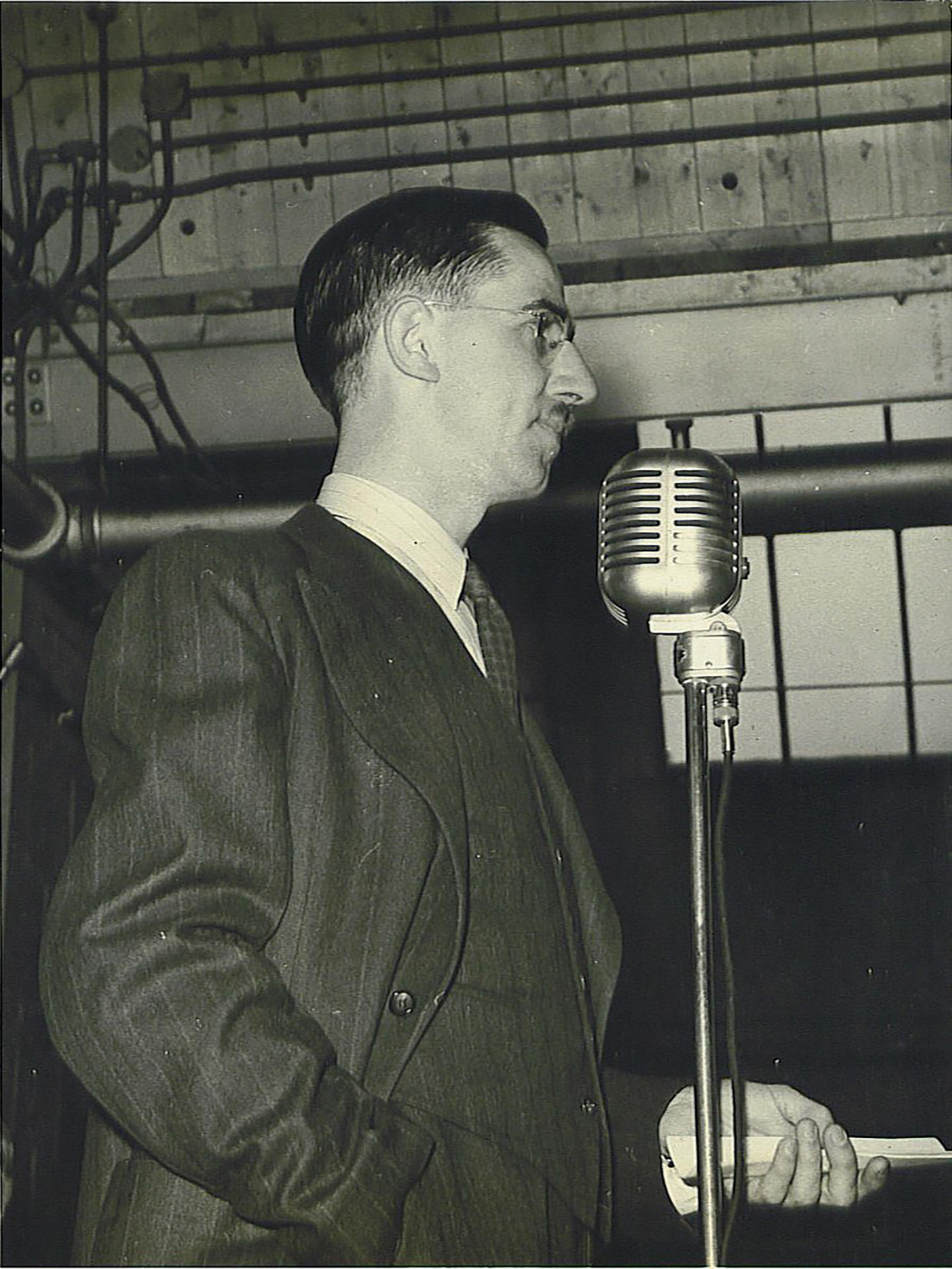
The task he faced was enormous. Where do you get trained personnel to operate the machinery, carry out quality control inspections, build the inspection gauges and produce wooden stocks? How do you train personnel with no experience to manufacture firearms? With men volunteering to join the army, where do you get personnel to carry out the precision machining needed to manufacture a rifle? Thousands of personnel were needed to make the large number of firearms required. Canada turned to an unlikely source for workers: women.
When Canada entered the war, the country was still recovering from the great economic depression. Nearly 10% of Canada's workforce were unemployed. Women did not work in factories, and their job prospects were limited. In a 2010 interview, Linda Wigley, who lived in Winnipeg, commented, "… about all there was to do for young girls was housework." The only other work was secretarial positions or jobs in the service industry, which did not pay well. The typical wage for a maid was $5.00 per week. The War and SAL were about to change that dynamic. Linda and the women who worked on the production line at SAL earned as much as $20.00 to $30.00 a week.
Ads appeared in newspapers throughout the country: Girls Wanted 18-35 Single or Married Without Children And With A soldier Husband. We train you to do the work. Women answered the call. They were motivated to help Canada's war effort. And the prospect of a good-paying job attracted them to build small arms in Toronto. Recruiters were sent out across the country to raise awareness of SAL's job opportunities and increase employment levels. But this resulted in another problem: where would the women live when they arrived in Toronto? The solution was another example of how innovation and coordination can solve complex problems.
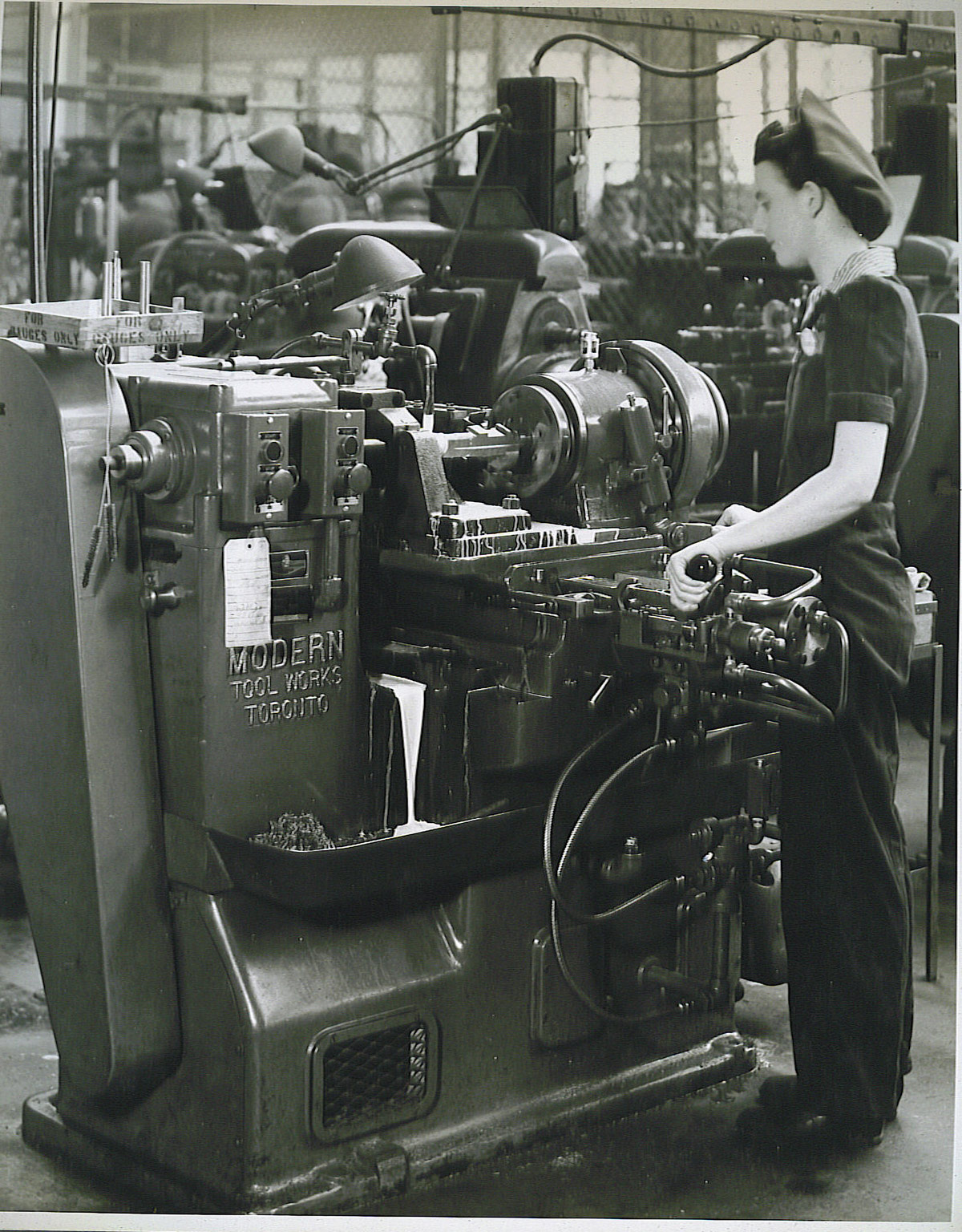
Katherine Rylko saw the newspaper ads in her local Saskatoon newspaper and applied. She was accepted. The Canadian government paid her train fare to Toronto, a necessity since, as she said in a 2009 interview, she did not have money to travel to Toronto. When Katherine arrived in Toronto, she and the other SAL employees on the train met a driver at the station.
A bus took them to the Rooms Registery Service Office, operated by the YWCA. The government had arranged for the YWCA to find local homes willing to take in the women and provide room and board. When the women arrived, they received a list of potential homes for consideration. This solution worked well since a dormitory for women at SAL was still under construction. And, by arranging homestay for the women, they could start work immediately.
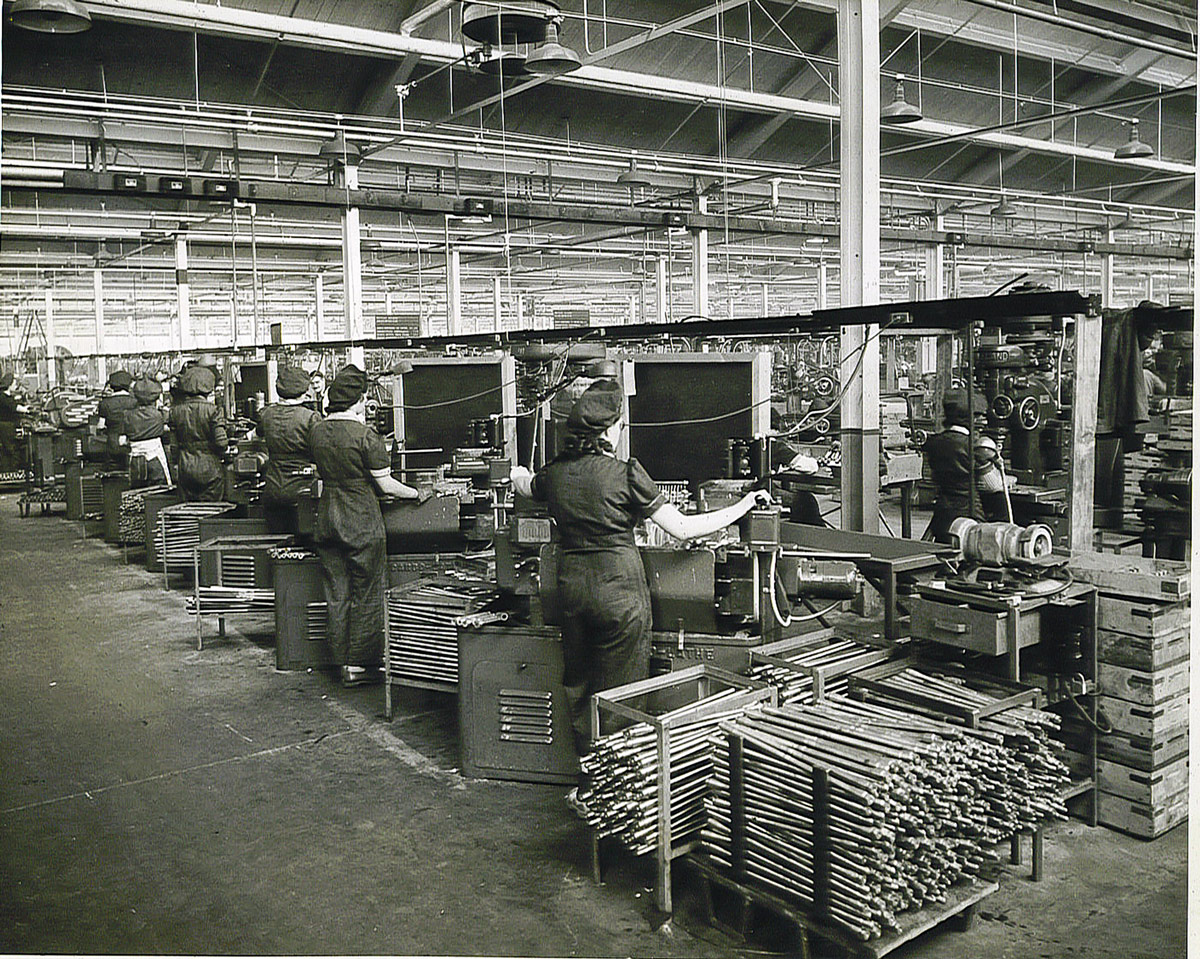
By May 15, 1942, 3,147 employees worked at SAL, with a 3 to 1 ratio of women to men. But the women working at SAL faced another problem – transportation to and from the plant. The streetcar line that ran out to Longbranch station required women to walk one kilometer to the plant. In the winter, this was an unpleasant walk. As the number of employees increased, a solution was required. The answer was to extend the line so streetcars could stop directly across from the factory. However, some local employees lived in areas not serviced by convenient public transportation. Initially, the plant operated on two shifts of 10 hours a day. On March 8, 1943, SAL announced a change to three eight-hour daily shifts. A Matron – a woman responsible for overseeing local transportation – was appointed to arrange carpools. Workers paid two dollars a week to the car owners for a ride to and from the plant.
By 1943, the number of employees working at SAL increased to 5,500 – 63% were women. As the number of employees increased, there weren't enough cars to transport workers to their shifts. SAL chartered a bus that picked up workers from the surrounding areas of Oakville, Port Credit, and Lakeshore Blvd.
Finally, in 1943, the dormitory building for women, located across the street from the factory, was completed. The dormitory could house 422 employees – 374 in double occupancy rooms and 48 in single rooms. Residents shared 32 bathrooms, showers, and laundry areas, But the amenities did not end with necessities. A spacious lounge, equipped with a fireplace, provided an area to relax between shifts. The lounge could accommodate up to 250 people, residents, and guests. Plus, the women occupants enjoyed bowling alleys, dating rooms, rooms for writing, and a games area. A cafeteria could feed 500 in one half-hour period or 250 at one sitting. The Toronto Star, in a 1943 article, called the dormitory a "luxury liner."
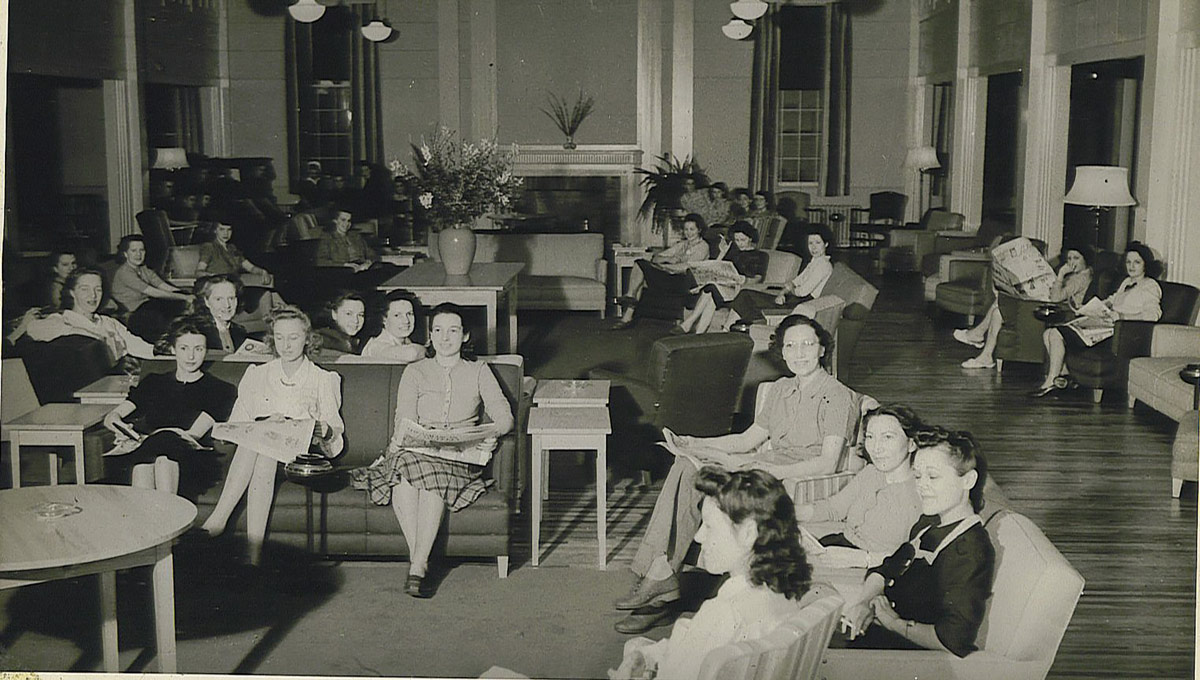
But workers who lived in the surrounding areas could also enjoy social activities. Employees could join a variety of sporting teams. Both men's and women's rifle teams used the ranges behind the Small Arms Inspection Building for practice and competitions. The men fired .303 LeeEnfields in matches, and the women used .22 caliber rifles. Other rifle teams from Toronto competed with SAL teams on the company ranges. With the hiring of an Athletic Director, sporting activities expanded. For a small cost, employees could join the Athletic association and enjoy a variety of sports from bowling to swimming and riding. These opportunities provided employees with a break from the monotony of working on the production line and boosted morale. Team competitions and friendly rivalry between departments occurred. The results appeared in Foresight, a bi-weekly employee-produced newspaper.
In addition, the company arranged social events for the employees. Ethel Griggs, an employee who assembled handguards to barrels, commented in a 2003 interview that Jolley, the General Manager, was the driving force behind social outlets for employees. "In an effort to boost morale, he insisted that management organize numerous social events for employees," she said.
Organized dances were one of the most popular social outlets for employees. Dances allowed employees who carried out repetitive manufacturing tasks to enjoy social interaction and escape the monotony of factory work. SAL management even arranged a dance at The Royal York Hotel in downtown Toronto on at least one occasion.
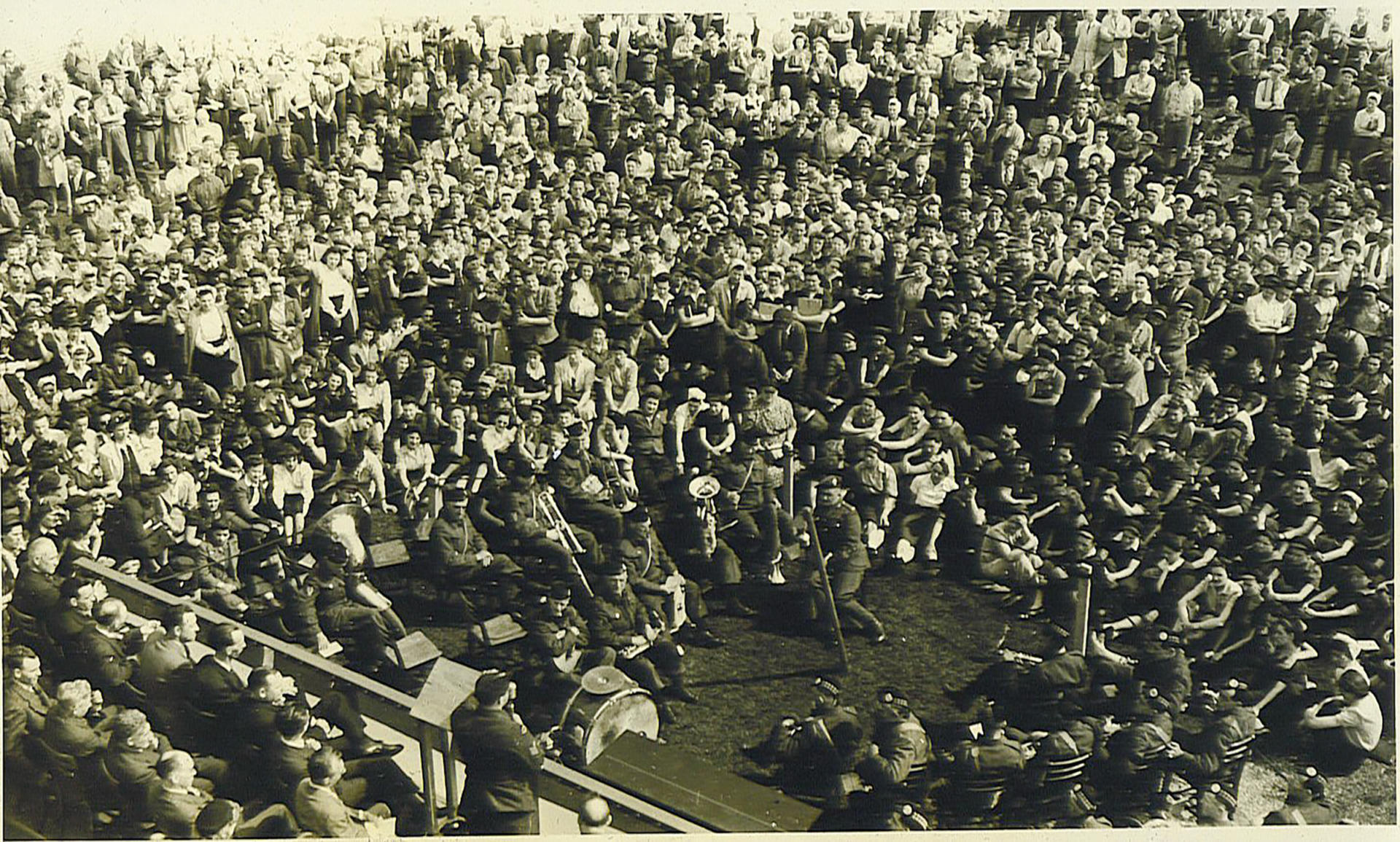
The military also organized dances for soldiers temporarily stationed in Toronto. Women employees from SAL were invited and had a chance to meet eligible single men. According to reports, thousands of soldiers and single women attended these dances.
And War bond rallies provided another social outlet for employees. War bonds were a way for Canada to finance the war effort. Citizens were encouraged to buy war bonds (often called Victory Bonds) for $4.00 each. The bonds were redeemable for $5.00 in seven years. SAL encouraged employees to purchase bonds and offered payroll deduction plans. The employees purchased an astounding, for the time, 3.5 million dollars in War Bonds to support the war effort – at an average of $300 per employee.
Victory bond rallies at the plant provided a way to promote sales targets and recognize departments that achieved or exceeded sales goals. Celebrities visited the factory to support these war bond drives. Employees stopped work to watch as Hollywood actors visited SAL, including Lucille Ball and Ralph Bellamy. These rallies provided workers with a welcome break from the stress of factory work.
Security was an essential part of plant operation. SAL Special Constable police officers, who had the power to arrest, were responsible for security. Employees wore an identification badge when they entered the plant. Every SAL employee was also issued a permanent pass with their picture and clock number. Workers carried this pass in a see-through case with their National Registration Card. Canadian law required the National Registration card to be carried by the person it was issued to under penalty of arrest. As a result, anyone entering, leaving, or working in the plant could be identified. In a first for Ontario, six women at SAL were sworn in as special constables by the Ontario Provincial Police. These policewomen had the power to make arrests. Their duties included factory patrols and daily spot searches.
As the demand for production increased, there was a need to hire more employees. The Toronto Star newspaper announced that SAL urgently required more workers. In the September 2, 1943 issue of Foresight, an article advised that men and women "must be found quickly" to meet production quotas. The employee age requirement changed to meet the demand: by 1943,287 grandmothers worked at the plant. Many had sons or daughters in the military. According to an article in the Toronto Daily Star, the grandmothers were excellent employees. By 1943, 25% of the women employees were over 40. In an article in the Foresight magazine, the editor acknowledged the "…valuable, industrious and intelligent class of people employed in our war factory, namely the women and girls."
The challenges of turning an empty lot into a small arms manufacturing center, staffed with personnel and manufacturing equipment, were formidable. Yet, from initial groundbreaking by the contractor Auglin-Norcross Ltd. In late August 1940, the first five Lee Enfield rifles were ready for inspection and trials in June 1941 – 10 months after the plant's construction, an incredible achievement.

Rifles manufactured at SAL had the words Long Branch stamped onto the receiver. Interestingly, the plant and rifle range were not located in Long Branch. In fact, the former village of Long Branch is east of the plant. However, the plant is sometimes mistakenly referred to as Long Branch Arsenal. The official and correct name for the factory is Small Arms Limited: the name Long Branch Arsenal does not appear on any documents, letters, or government communication. The first five rifles passed the inspection and endurance trial process. Shipments started with 200 rifles sent to Europe in September 1941. Production increased to 4,000 rifles per month, with 7,589 rifles manufactured by the end of the year. Lee Enfield rifle production reached 25,000 per month by 1942 and rose to 32,000 per month. Production figures continued to grow, and each year the total increased, reaching nearly 1,000,000 rifles. Total production numbers by year included:
1942 - 206,389 No. 4 rifles produced
1943 - 564,113 No. 4 rifles produced
1944- 814,829 No. 4 rifles produced
The initial manufacturing cost of a Lee Enfield in 1941 was $62.30. By 1943, production efficiencies had reduced unit costs to $32.00. But the .303 Lee Enfield was not the only firearm manufactured at the plant. Production of the Sten Mark II, a fully automatic 9mm submachine gun, started in February 1942, only seven months after production personnel received manufacturing blueprints. By year's end, SAL produced 17,718 Sten guns. This number increased to 73,407 in 1943. In total, nearly 100,000 Sten guns were made at the plant. The cost of manufacturing a Sten was approximately $10.00.
The Canadian Army, Navy, and Airforce received the first shipments of submachine guns. Sten guns were shipped to the United Kingdom and China through the Mutual Aid Board. C. D. Howe, a Cabinet Minister, supervised the Mutual Aid Board, which provided two billion dollars of free economic aid to Commonwealth countries and China during WW2.
Small ArmsLimited also produced M3 carbine magazines (the M3 was an M1 carbine with an infrared scope attached); wooden holster/stocks for the Inglis 9mm pistol; the Lee Enfield No. 4Mk 1* (T) Sniper Rifle;.22 calibre pattern Lee Enfield style rifles; and a unique training rifle.
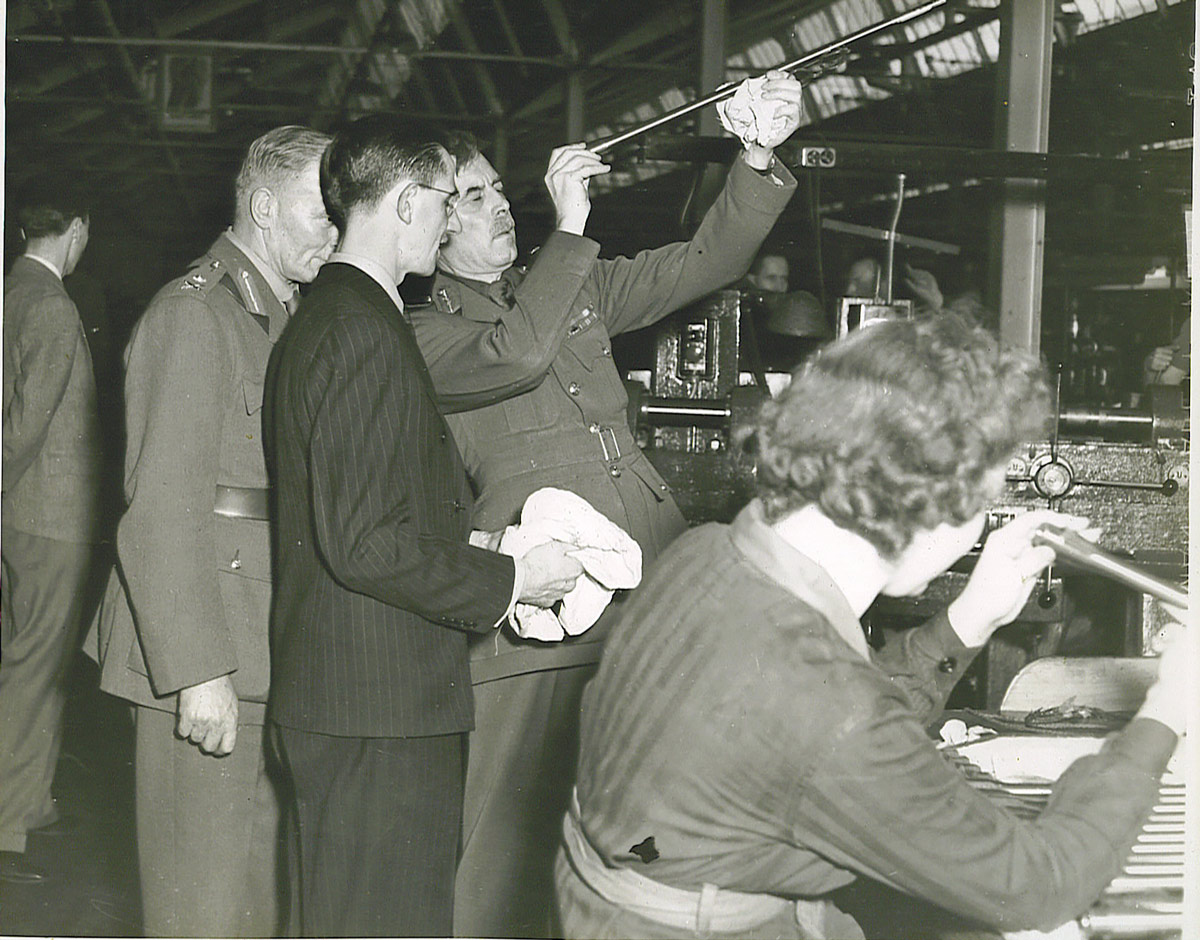
The training rifle, developed in 1943, was a non-firing, bolt action, eight and one-half pound near replica of the .303 service rifle. A target holder was attached to the rifle and positioned one-quarter inch in front of the muzzle. The user or instructor inserted a paper target into the target holder. The sight picture simulated shooting at longer ranges when viewed through the forward-mounted front sight. A press of the trigger caused two needles to pierce the paper target.
A firearms instructor could determine if there was proper sight alignment by referencing the location of the pinholes on the target. In addition, a mechanism in the stock required the shooter to press the rifle firmly to the shoulder to release the firing pin. SAL manufactured a total of 4,000 training rifles.
As the war in Europe wound down, the need for small arms decreased. With peace declared in Europe on May 8, 1945, Small Arms Limited was nearly at the end of its history. But by any standard, SAL was a success. For an initial investment of $8,500,000 to build the factory, SAL generated nearly $44,000,000 in sales. Employees enjoyed good pay, health benefits, and working conditions. This created an opportunity for better housing, schools, and an expanded industrialized economy for local citizens. And women were no longer dependent on low-paying domestic or service jobs. At the end of the war, they found factory work in the rapidly expanding post-war economy.
The official end to Small Arms Limited occurred on March 6, 1946, when the factory became a division of Canadian arsenals Limited (CAL). A portion of the factory continued to produce small arms until 1974, including the FNC1A1, FNC2A1 rifles, and the Canadian C1 version of the Sterling submachine gun. But the history of small arms development and manufacturing that started at SAL continued.
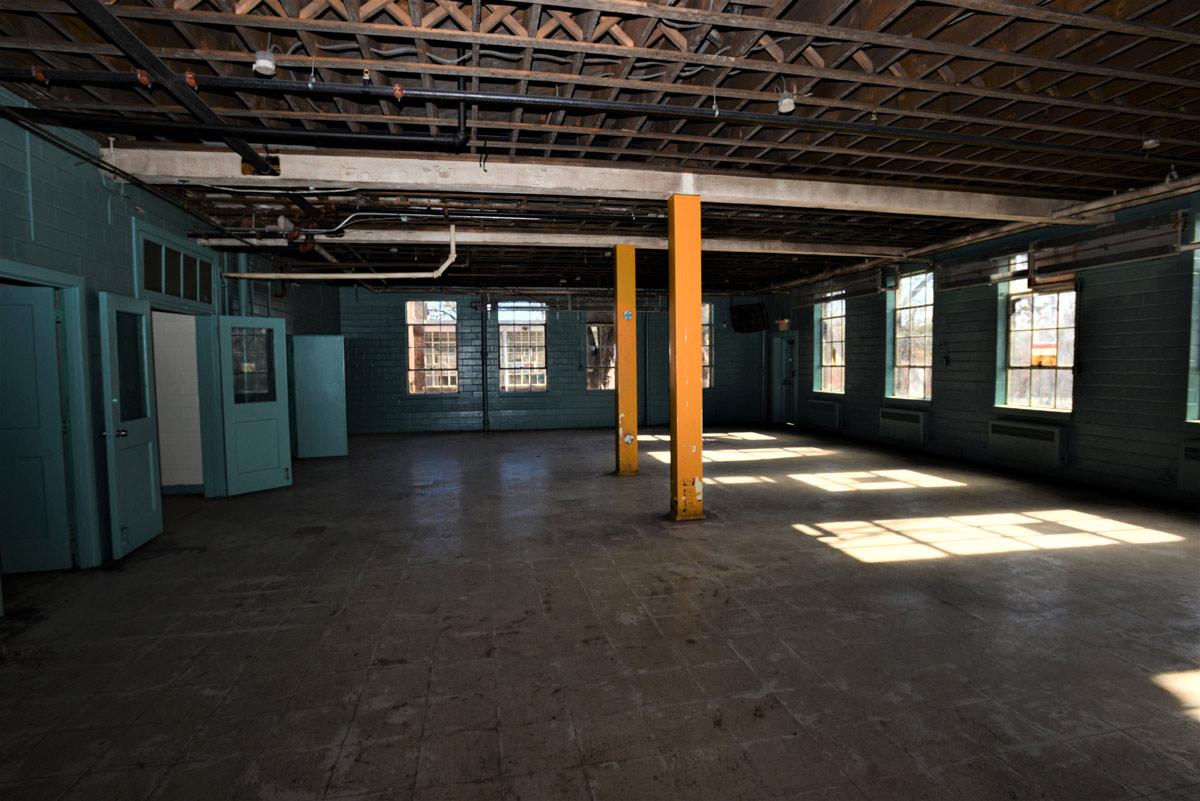
In 1976, Diemaco in Kitchener, Ontario, became the overhaul and repair center for Canadian FN rifles and C1 submachine guns. Thousands of rifles manufactured in the Small Arms Limited plant by CAL traveled to Kitchener for rebuild and repair.
In the early 1980s, this role changed when Diemaco received the contract to build a new generation of weapons for the Canadian military - the C7, C8, and variants. Later, Diemaco became Colt Canada. Once again, a plant in Canada produced firearms for the Canadian military. And a tradition of firearms manufacturing that started at Small Arms Limited 35 years before continued.
The over 15,000 men and women who worked at Small Arms Limited between 1939 to 1945 provided Canadian and allied soldiers with the small arms needed to win the war. The wages, benefits, and working conditions at the plant were an incentive to the thousands of workers who worked at the plant. But they were also attracted by a higher calling. Former employee Katherine Rylco summarized the workers' feelings in her 2009 interview. "We knew we were doing some good. I wanted to help fight this war."
For the employees who worked long, exhausting hours at Small arms Limited, it was the real call of duty.
Part 2 continues the story of Small Arms Limited and how employees – women – with only grade school education and without a technical background manufactured small arms; the organization of the plant; and the management system that created a world-class small arms manufacturing operation.
Special thanks to Robin Solomon, Coordinator of Museums and Small Arms Inspection Building, who arranged a tour of the Small arms Inspection Building; Tracy Oliveri, Collection Assistant, City of Mississauga, who allowed me access to the SAL Archives; Robert Stanczyk, who provided me with relevant archival documents; and, Mathew Wilkinson, Historian at Heritage Mississauga, for historical information and archival pictures.